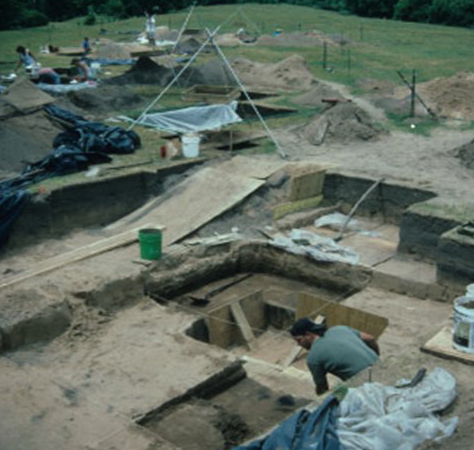The Zemaitis site in western Michigan contains evidence of human occupation from the terminal Archaic through the Middle and Late Woodland periods. The site sits on a natural levee between the bank of the Grand River and a seasonal marsh, and it afforded its inhabitants a rich array of riverine and wetland resources. The levee grew due to the accumulation of flood and wind deposits, burying evidence of a number of discrete occupations in the process.
Richard Flanders of Grand Valley State University conducted the initial investigations of the site in 1970 and 1975. His work focused on the north end, and he wanted to know if Zemaitis was a substantial habitation site that was associated with one of the larger Middle Woodland mortuaries on the lower Grand River. Though he didn’t find evidence of this association, he did uncover a series of intact middens containing rich deposits of lithics, ceramics, and subsistence remains.




